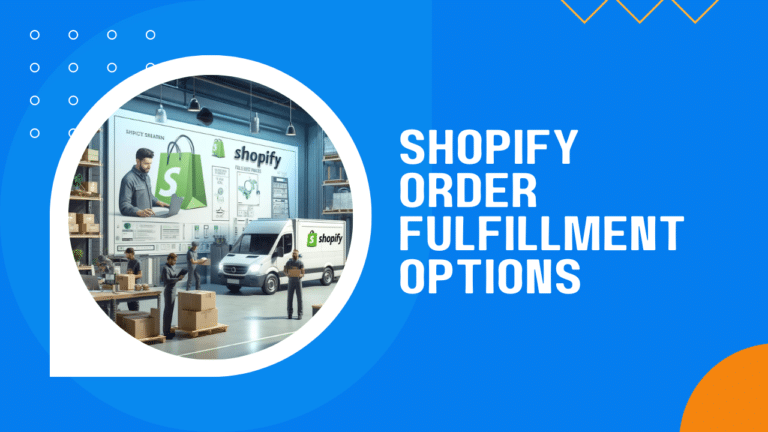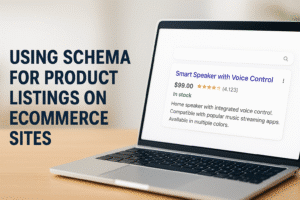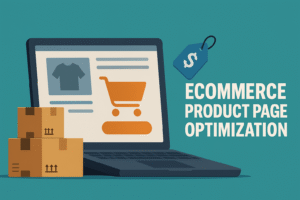Effective order fulfillment is a cornerstone of success for online retailers, directly impacting customer satisfaction and the scalability of your business. For Shopify store owners, selecting the right fulfillment strategy is not just about keeping operations smooth—it’s a crucial decision that influences every customer interaction and your overall market reach.
We have put together this guide at ShipBuddies to explore various fulfillment options available to you as a Shopify merchant, helping you navigate the complexities of logistics with clarity and precision.
Whether you’re considering self-fulfillment, third-party logistics (3PL), dropshipping, or leveraging Fulfillment by Amazon (FBA), this article provides the insights needed to make informed decisions that align with your business goals and customer expectations.
Understanding Order Fulfillment

Order fulfillment is the critical process that begins once a customer clicks “buy” and doesn’t end until they have their purchase in hand. It is central to the operational success of an ecommerce business and directly impacts customer satisfaction and retention.
For Shopify store owners, refining this process can lead to smoother operations and enhanced customer experiences.
The Order Fulfillment Process Explained
Understanding each stage of the order fulfillment process helps identify potential areas for improvement and the most suitable fulfillment strategy:
- Order Receipt: This initial stage marks the beginning of the fulfillment process. Once an order is placed, it is automatically logged into your Shopify store’s management system. This triggers real-time inventory checks and updates to ensure accuracy in stock levels and order viability.
- Picking: The picking process involves locating and selecting the exact items ordered from your inventory. Efficient picking is crucial to speeding up the overall fulfillment process and reducing errors. Many successful Shopify stores use barcoding and other tracking technologies to streamline this stage.
- Packing: Once items are picked, they need to be securely packaged. This step is about more than just putting items in a box; it involves using the right materials to protect the products during shipping and presenting the products in a way that reflects your brand, which can significantly impact the customer’s unboxing experience.
- Shipping: The packed orders are then shipped to the customer using the selected delivery service. This step requires coordination with reliable shipping partners to ensure timely and cost-effective delivery. Shopify store owners must choose carriers wisely, considering factors such as shipping speed, cost, and the geographic reach of different carriers.
- Delivery: The final delivery of the order to the customer is the moment of truth in the fulfillment process. It’s crucial that this step is executed without delays or damage to maintain trust and satisfaction. Tracking systems and regular updates can enhance the customer experience during this phase.
- Returns Processing: Efficiently managing returns is an extension of good fulfillment practices. This involves setting up a clear, easy-to-use return policy and a system for receiving returned goods, inspecting them, restocking usable items, and managing refunds or exchanges. Handling returns swiftly and effectively can turn potentially negative customer experiences into positive ones.
By thoroughly understanding each step of the order fulfillment process, Shopify store owners can better decide whether to manage logistics internally or outsource to third-party services like 3PLs or dropshipping partners.
Each method has its own set of challenges and benefits, which we will explore in the following sections of this guide.
Order Fulfillment Options for Shopify Stores
For Shopify store owners, choosing an optimal fulfillment strategy is crucial for managing operational efficiency, customer satisfaction, and scalability.
Here’s a more detailed exploration of each primary fulfillment method available, helping you make an informed decision tailored to your specific business needs.
Self-Fulfillment
Detailed Insights:
Self-fulfillment involves managing all aspects of the fulfillment process internally, from storing inventory to shipping orders directly to customers. This model is best suited for businesses with manageable order volumes or those selling unique, high-value, or customizable products where personal oversight is beneficial.
Pros:
- Direct Control: Direct oversight of packing and shipping processes allows for personalized packaging and ensures the quality of each order dispatched.
- Cost Efficiency: Potentially lower overhead costs as you avoid paying third-party fees, making it ideal for businesses with lower order volumes.
Cons:
- Time and Labor Intensive: Significant time investment required for managing inventory, processing orders, and handling customer inquiries, which can detract from other business development activities.
- Scaling Challenges: There are significant challenges you may face in scaling in-house order fulfillment. Increasing order volumes can quickly outpace the capabilities of self-fulfillment, requiring sudden investments in space and staff.
Best Practices:
- Use automated inventory management software to maintain accurate stock levels and prevent overselling.
- Develop efficient systems for packing and shipping, including clear workflows and quality checks to minimize errors and handle returns effectively.
Third-Party Logistics (3PL)
Detailed Insights:
Utilizing a 3PL provider can streamline your fulfillment process by outsourcing inventory management, warehousing, and shipping logistics. This option is ideal for growing businesses looking to expand their market reach without the capital expenditures associated with warehousing and logistics.
How to Choose a 3PL Provider:
- Compatibility: Ensure the 3PL’s software seamlessly integrates with Shopify to maintain real-time data accuracy.
- Flexibility: Choose a provider that can scale with your business and adapt to seasonal fluctuations without binding contracts.
Popular 3PL Providers for Shopify:
- ShipBuddies: ShipBuddies’ Shopify order fulfillment services offer robust analytics and real-time tracking that integrates with the Shopify platform, enhancing visibility over the shipping process.
- Fulfillment by Amazon (FBA): Utilize Amazon’s extensive network for faster delivery times, though be mindful of their control over customer service.
- Shopify Fulfillment Network: Tailored for Shopify users, it provides integrated services that simplify logistics for store owners.
Dropshipping
Detailed Insights:
Dropshipping is a low-risk fulfillment method where a third party handles product storage and shipment directly to your customers. This model is particularly beneficial for stores testing new markets or expanding their product lines without upfront investment.
Advantages:
- Minimal Risk: Since you don’t purchase inventory upfront, there’s minimal financial risk involved.
- Wide Product Selection: Easily expand your product offerings without additional inventory costs.
Disadvantages:
- Supplier Dependence: You rely heavily on third-party suppliers for order fulfillment, which can lead to variability in order processing and delivery times.
- Competitive Market: Common products may face stiff competition on pricing and quality, impacting profitability.
Tips for Finding Reliable Suppliers:
- Establish clear communication and service level agreements (SLAs) with suppliers to ensure expectations are met.
- Regularly audit supplier performance to ensure consistency and reliability in product quality and delivery times.
Fulfillment by Amazon (FBA) for Shopify
Detailed Insights:
FBA allows Shopify store owners to leverage Amazon’s powerful distribution network. This service handles storage, packing, shipping, customer service, and returns, which can significantly enhance operational efficiency.
Integration Steps:
- Link your Shopify store with Amazon’s FBA service through direct integration tools, allowing for streamlined order management and inventory tracking.
- Ensure products meet Amazon’s packaging and prep requirements before shipment to their fulfillment centers.
Pros:
- Prime Eligibility: Products fulfilled through FBA are eligible for Amazon Prime, increasing their attractiveness to a vast customer base.
- Reduced Burden: Amazon takes on the responsibility of customer returns and inquiries, reducing the workload on your customer service team.
Cons:
- Cost Considerations: FBA fees can be complex and may cut into margins, especially for larger or slow-moving items.
- Brand Experience: Shipping in Amazon packaging rather than your own can dilute your brand’s presence.
Factors to Consider When Choosing a Fulfillment Option**
Choosing the right fulfillment option for your Shopify store requires a careful analysis of various factors. Each factor can significantly impact your operational efficiency, customer satisfaction, and overall business growth. Here’s an expanded look at these essential considerations:
Cost-Effectiveness
Detailed Analysis:
- Direct vs. Indirect Costs: Understand the direct costs associated with each fulfillment option (like storage fees, packing materials, shipping costs) and indirect costs (such as lost sales due to stockouts or delays).
- Break-even Analysis: Perform a break-even analysis to see how different fulfillment methods affect your profitability at various sales volumes.
Example: Comparing the monthly costs of renting warehouse space and hiring staff for self-fulfillment versus the per-order fees of a 3PL can reveal which is more cost-effective based on your average sales volume.
Scalability
Future-Proofing Your Business:
- Modular Scalability: Look for fulfillment options that offer modular scalability, allowing you to increase or decrease the services you use based on current demand without a significant overhaul of your fulfillment strategy.
- Integration with Other Systems: Ensure that the fulfillment method can integrate not just with Shopify but also with other ecommerce tools and systems you use, facilitating smoother scalability across your tech stack.
Control Over the Shipping and Handling Process
Ensuring Brand Consistency:
- Customization Opportunities: Evaluate how well different fulfillment options can accommodate special packaging, inserts, or other customizations that reinforce your brand identity.
- Handling Sensitive Products: If you deal with fragile, perishable, or high-value items, assess which fulfillment method provides the meticulous care these products require.
Geographic Reach and Delivery Times
Optimizing for Speed and Efficiency:
- Regional Fulfillment Centers: Consider whether potential 3PL providers have fulfillment centers located near your major customer bases, which can significantly reduce delivery times.
- Multi-channel Fulfillment: Some fulfillment options may offer the ability to ship products through multiple channels, enhancing your geographic reach and flexibility in delivery options.
Technological Integration
Leveraging Technology for Efficiency:
- Real-Time Data Sync: Choose a fulfillment option that offers real-time inventory and order data synchronization to prevent issues like overselling or stock discrepancies.
- Advanced Analytics: Utilize fulfillment services that provide advanced analytics to track order fulfillment performance, customer satisfaction metrics, and other KPIs that can inform business decisions.
Customer Satisfaction
Maintaining High Service Levels:
- Speed of Delivery: Consider how the speed of delivery impacts customer satisfaction in your market segment. Faster delivery times can significantly enhance customer experience, especially in competitive markets.
- Handling Customer Inquiries: Ensure the fulfillment service provides adequate support for addressing customer inquiries and issues related to shipping and handling, which is crucial for maintaining customer loyalty.
Environmental Impact
Sustainable Practices:
- Eco-friendly Options: Evaluate whether fulfillment providers offer eco-friendly packaging and practices, which can appeal to environmentally conscious consumers and reduce your carbon footprint.
- Waste Reduction: Choose options that emphasize waste reduction in packaging and transportation, aligning with broader sustainability goals.
Technological Integration
The ecommerce landscape is always moving fast, and leveraging the right technology is crucial for streamlining order fulfillment processes and enhancing overall efficiency.
For Shopify store owners, integrating advanced technological solutions can dramatically improve the management of inventory, orders, and customer communications. This section explores key technologies and tools available on Shopify that can be integrated with various fulfillment options.
Key Technologies for Seamless Integration
Inventory Management Systems:
- Real-Time Syncing: Utilize systems that provide real-time inventory updates, preventing overselling and stockouts. These systems ensure that your online store’s inventory levels are automatically adjusted as sales are made, providing accurate data for both store owners and customers.
- Automated Reordering: Some systems include features that automatically reorder products when inventory levels fall below a predefined threshold, ensuring continuous product availability.
Order Management Systems:
- Centralized Control: Implement an order management system that centralizes all orders across different sales channels, simplifying order tracking and processing. This is particularly beneficial for stores operating on multiple platforms besides Shopify.
- Batch Processing: Tools that enable batch order processing can expedite the fulfillment process, especially for stores with high order volumes.
Enhancing Customer Experience with Technology
Automated Customer Notifications:
- Order Status Updates: Automatically send email or SMS notifications to customers about their order status, from confirmation to delivery. This keeps customers informed and can reduce the volume of customer service inquiries.
- Personalized Communication: Use tools that allow for customization of communication, reinforcing your brand’s voice and enhancing the customer experience.
Shipping and Tracking Integration:
- Carrier Integration: Integrate directly with shipping carriers through Shopify, allowing for seamless updates and tracking information that can be relayed to customers in real-time.
- Multi-Carrier Support: Employ platforms that support multiple carriers to provide a variety of shipping options to customers, improving flexibility and potentially reducing costs.
Automation and Artificial Intelligence
Process Automation:
- Automated Packing Slips: Utilize tools that automatically generate packing slips and shipping labels based on the order information, reducing manual input and the potential for errors.
- Smart Algorithms: Deploy AI-driven tools that optimize packaging configurations, minimizing costs and improving delivery times.
Customer Service Automation:
- Chatbots and AI Support: Implement AI-driven chatbots to handle routine customer inquiries about order status, returns, and product information, freeing up human resources for more complex customer service tasks.
- Predictive Assistance: Use AI to predict and address potential issues before they arise, such as delays in delivery or stock issues, enhancing proactive customer service.
Integrating with Third-Party Applications
Shopify App Store:
Explore the Shopify App Store for additional tools that can be integrated into your Shopify store to further enhance fulfillment capabilities. Apps range from advanced analytics tools to additional inventory management solutions.
API Access:
Utilize Shopify’s API to create custom integrations with external systems, allowing for a tailored solution that fits your specific business needs and operational workflows.
Technological integration is a powerful way to optimize the fulfillment process, reduce operational burdens, and improve customer satisfaction. By selecting the right tools and technologies that integrate seamlessly with Shopify, store owners can create a robust system that supports efficient and effective fulfillment strategies.
Packing Up: Final Thoughts on Shopify Fulfillment Strategies
Navigating the order fulfillment options available to Shopify store owners can be daunting, yet mastering this aspect of ecommerce is crucial for ensuring operational efficiency, customer satisfaction, and business scalability.
Throughout this guide, we’ve explored various fulfillment strategies—from self-fulfillment to leveraging third-party logistics (3PL), dropshipping, and even Fulfillment by Amazon (FBA). Each method offers distinct advantages and challenges, and the choice ultimately depends on your specific business needs, growth objectives, and the level of control you wish to maintain over your customer experience.
As you consider the future of your Shopify store, reflect on the factors that are most critical to your operation’s success.
Evaluate the cost-effectiveness, scalability, and technological integration capabilities of each fulfillment option.
Consider how these methods align with your brand’s promise and customer service expectations.
And most importantly, choose a solution that not only meets your current needs but also supports your long-term business goals.
Next Steps:
- Assess Your Current Strategy: Take a moment to review your existing fulfillment processes. Are they aligned with your business objectives? Are there opportunities to reduce costs or improve service delivery?
- Explore Technological Integrations: Investigate Shopify apps and third-party tools that can automate and streamline segments of your order fulfillment. The right technology can transform your operations and enhance your competitive edge.
- Consult with Experts: If you’re considering a major shift in your fulfillment strategy, such as partnering with a 3PL like ShipBuddies or starting with FBA, it may be beneficial to consult with Shopify fulfillment experts or other Shopify store owners who have experience with these services.
- Experiment and Iterate: Don’t be afraid to test different fulfillment methods. The unique nature of your business means that the optimal solution might be one that combines various approaches tailored to different segments of your product range or customer base.









